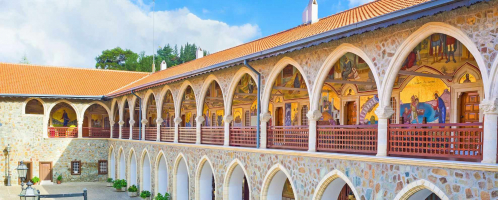Top 8 Brazilian Culture, Customs, and Etiquette
Being a vast country consisting of multiple cultures and ethnicities, Brazil has many traditions and customs that even some Brazilians don’t understand, ... read more...depending on which part of the country they’re from. It’s these quirks that make Brazil such a rich, fascinating, and, at times, downright eccentric country that can only be truly understood by locals or those that have spent some time there. Here's your guide to Brazilian Culture, Customs, and Etiquette!
-
Brazilians are so interesting and different from other countries in the world. Brazilians view time as something flexible. They put more emphasis on people, relationships, and completion of transactions rather than set schedules. While the bus, train, and plane schedules are generally adhered to, showing up late to a party or social function is quite common. While some North Americans view the Brazilian perception of time and acceptance of tardiness as a lack of caring, many Brazilians wonder why North Americans are more attentive to schedules than to human needs.
Therefore, if you visit a Brazilian home on time, it is impolite. If invited to a Brazilian household, come no earlier than 15-30 minutes after the designated time, and avoid being more than half an hour late for dinner or more than an hour for a party. Since Brazilians are generally easygoing, the etiquette for visiting their home is quite casual and relaxed.

thediscoveriesof.com 
npr.org -
Gift Giving is might one of the Brazilian culture, customs, and etiquette that you should know before you go to this country. Small gifts such as a chocolate bar are often given as a symbolic gesture of appreciation towards someone who does a favor. If invited into a Brazilian home, bringing flowers or a small gift for the hostess is a good gesture of appreciation. A gift for the hostess’ children will also be greatly appreciated. Flowers can be sent before or after a visit to someone’s home. Orchids are considered a nice gift. Wrapping gifts in vibrant colors will be appreciated, particularly if it is in the national colors of yellow and green.
Gifts that are sharp such as knives or scissors refer to an intention to ‘sever’ ties with someone. Thus, avoid giving gifts that may be interpreted as a cutting of connections. Avoid giving practical gifts such as wallets, keychains, or perfume. These are considered to be too personal. If a married man has to give a gift to a woman, he should mention that the gift is from their spouse to avoid the gesture being interpreted as flirtation. Avoid giving gifts wrapped in purple or that are purple, such as purple orchids. The color purple is associated with mourning.
tiedup.rs 
huffpost.com -
Feijoada is a genuinely Brazilian dish that is enjoyed and celebrated across the country. Feijoada is typically eaten at the weekend with family or a group of friends over an extended lunch period. This hearty meal is a thick mixture of beans, fresh and smoked meats plus seasonings. It’s considered comfort food and is often called “food for the soul.” Given its size and heaviness, it’s a food to be eaten slowly and savored. The only recommended activity after eating is napping.
In the city of São Paulo, feijoada is a typical dish in working-class restaurants on Wednesdays and Saturdays, mainly in the commercial area. In Rio de Janeiro, restaurants traditionally serve it on Fridays. The dish is normally served with a choice among a selection of meats (e.g. pork, bacon, pig ears, pig feet) to fulfill the customer's needs. Other variations of feijoada also exist, such as low-fat or vegetarian versions.

simplyrecipes.com 
cheapandcheerfulcooking.com -
Second only in size to Salvador’s and Rio de Janeiro’s Carnival, the Parintins Folklore Festival in Amazonas – sometimes known as the Boi Bumba festival – is one of Brazil’s largest annual events. It takes place over three days at the end of June on an island 420km south of Manaus, on the edge of the magnificent Amazon River, next to wildlife and verdant rainforest. This huge annual festival originates in 1913 and showcases the blend of local cultures, both those of indigenous people and those of the descendants of slaves who came to the area.
The festival centers around a re-enactment of the legend of Boi-Bumba – when an ox, that is killed for its tongue to satisfy the cravings of a pregnant lady is then miraculously restored to life. Over the years the celebration has grown and since 1988 has taken place in the 35,000-seater purpose-built Bumbódromo. Two historic local associations Caprichoso (blue) and Garantido (red) parade colorful floats, and compete through dance, music, and elaborate costumes, impress the judges with their displays portraying the story of the ox, and rituals and legends of the local river and rainforest. Both sides are encouraged by their supporters in matching blue and red colored seats. The festival is a glorious, theatrical spectacle that you should watch once!

the-world-events.com 
everfest.com -
Lemanjá is among the Brazilian culture, customs, and etiquette that you should be aware of. Every year, across the country, Brazilians of the Candomblé religion gather to celebrate the goddess of the sea, Iemanjá. During the festivities, Brazilians offer flowers and gifts to their goddess Iemanjá at the sea’s edge and send them out to her in the ocean. Everyone dresses in white and night-long music and dancing continue after the offerings have been made.
Lemanjá, goddess (or orixá) of the sea, is a central deity in the Candomblé religion. She watches over sailors and fishermen and controls their catches. She is very powerful, and is concerned with every aspect of womanhood, fertility, and family; she is also the protector of children. She often is depicted as a mermaid and is always dressed in either white or blue. In Rio de Janeiro, Festa de Iemanjá is celebrated on January 1, when New Year’s Eve revelers of all religions wear white, run into the sea and jump over seven waves to get closer to the goddess. Many also throw flowers into the sea and offer presents from the shore.

theculturetrip.com 
cbsnews.com -
Brazil is one of the most beautiful and largest countries in South America that celebrates New Year in a very enthusiastic way. So, New Year’s Eve is among the Brazilian culture, customs, and etiquette that you should bear in mind. They dance and enjoy the entire night beneath the open sky. The firework art during midnight is like a bonus. The new year is celebrated with traditions and customs as well. During midnight the local people come out on the beach and jump seven waves in the sea throwing flowers. Brazilians believe this brings them luck and strength to face the year ahead of them. For each wave you jump, you are allowed one wish.
It is common for everyone to wear white on New Year’s Eve in Brazil. However, Brazilians also believe the color of the clothes you wear on New Year’s Eve will dictate the following year. Because of that, some people may choose an accessory or other piece of clothing with a pop of color as well. And they choose their outfit for this celebration very carefully. It is also common for people to always wear brand new clothes and underwear. Spending New Year’s Eve in black is a no-go. Don’t miss the first breakfast of the New Year. As per the Brazilian tradition, eating lentil soup or lentils with rice will bring prosperity and good luck for the entire year. This morning breakfast is full of energy and protein especially needed after the night full of dance and enjoyment.

travelafter5.com 
thertwguys.com -
Football is the most popular sport in Brazil. Brazilians probably know the true passion football brings more than almost any other country. So, they often refer to their country as "o País do Futebol" ("the country of football"). Everyone from men and women to children will usually have a team and football stadiums become charged with emotions as rival teams from across the country battle it out on the pitch to the sound of thousands of fans cheering, booing, and singing.
Football has a major effect on Brazilian culture. It is the favorite pastime of youngsters playing football on the streets and on indoor Futebol de Salão fields. The World Cup draws Brazilians together, with people skipping work to view the national team play, or employers setting up places for employees to watch. The General Elections are usually held in the same year as the World Cup, and critics argue that political parties try to take advantage of the nationalistic surge created by football and bring it into politics. Former Brazilian footballers are often elected to legislative positions.

skysports.com 
businessinsider.com -
The Carnival is one of the Brazilian culture, customs, and etiquette that you should know. It is the main festivity in Brazil which earned the distinction of being “The Greatest Show on Earth.” The Rio Carnival starts on Friday until Tuesday or just a day shy of Ash Wednesday, a significant Catholic tradition that signals the start of Lent. At the heart of the Carnival is the samba, which is the perfect illustration of the Afro-European blend that defines Brazilian culture.
The top samba schools get the honor of performing in front of millions at the Sambodromo. It’s obvious by watching the performances at the Sambodromo the amount of preparation that goes into each dance step, the choice of song, and the selection of dancers to represent each school. If you really want to understand the question of what is Carnival, head off to the Sambodromo particularly on Carnival Sunday and Monday to experience first-hand why this annual tradition is visited by millions of people from all parts of the world.

c2rio.rezdy.com 
theatlantic.com





























